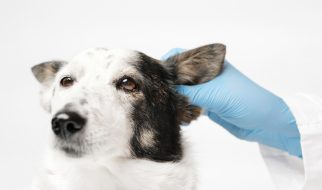Most pet parents might assume injury prevention is more applicable to highly active or athletic dogs. Unfortunately, all types of canine breeds are at risk of injuries. How often your dog moves like a full handbrake turn when playing fetch, tumble, chase around with their fellows, and play strenuously, can increase their injury risk. However, practicing caution can significantly improve their safety and quality of life while doing the activities they enjoy.
As we continue, we will discuss a few simple guidelines to prevent injuries in your animal companion so they can continue their routine activities uncompromised.
5 Pointers for Preventing Dog Injuries
Keeping your pet locked up in their crate or stopping them from playing isn’t the answer. Although it is impossible to completely prevent dog injuries, watching out for some environmental and lifestyle factors might help reduce the risk.
Here are five easy pointers to reduce your pet’s injury risk.
1. Remove Obstacles and Objects That Might Contribute to Injuries
Is there furniture that your dog or child likes to climb on that could put them in harm’s way? Are there items or toys that could potentially be dangerous to their well-being if played together? The best thing you can do is remove everything from their environment that may threaten their safety.
2. Maintain Their Healthy Weight
Obese pets tend to have a higher injury risk due to the added pressure their joints, bones, and muscles carry. By keeping your pet’s weight healthy, you’re also reducing their risk of developing arthritis early on and promoting their joint health. If you want your pet to continue enjoying their favorite activities, avoid overfeeding them and never let their weight get past the healthy range.
3. Assist With Furniture and Vehicle Exits
A carefree jump out of a vehicle can result in an impactful or unstable landing. Avoid unnecessary impact on your pet’s knees, shoulders, spine, and elbows by lifting your dog in and out of the car. Lifting your pup off and onto furniture can also minimize jolting. Consider using portable pet stairs or ramps if your pet is too big for human guidance to provide safer walks on elevation changes.
4. Watch for Signs of Weakness
Numerous high-energy canines can overexert themselves beyond their level of physical fitness, so study your pet and know when their muscles are tired. Weakness is among the common indications of muscle fatigue and can cause the dog to pace. Pushing those muscles further will only cause injury, so give your pet enough time or days to rest before engaging them in their regular activities.
If you assume the sign of weakness is not caused by muscle fatigue or routine activities, take your pet to a veterinary diagnostic lab to examine and treat their condition immediately.
5. Warm Up Before Exercising
Warming up is necessary before performing any exercise. The same applies to our animal companions, especially the highly energetic kinds. Giving your pet a quick warmup by jogging or walking for a few minutes before any intense exercise can loosen up joints and increase muscular blood flow, reducing their chances of muscular strains and sprains.
To End
Your animal companion might not be a sporting or professional working dog, but they always give their best in everything they do. It is our part as their parents to keep them safe and protected. Following and implementing the simple tips we’ve enumerated above can help your dog remain healthy while doing the activities they love for a long time.








